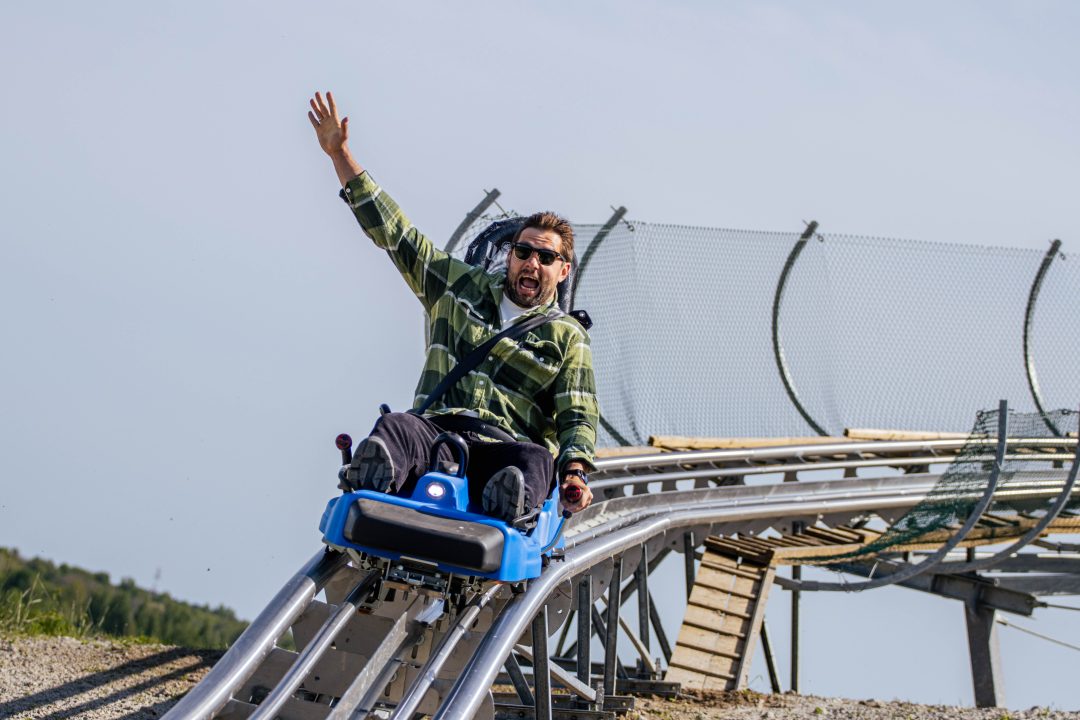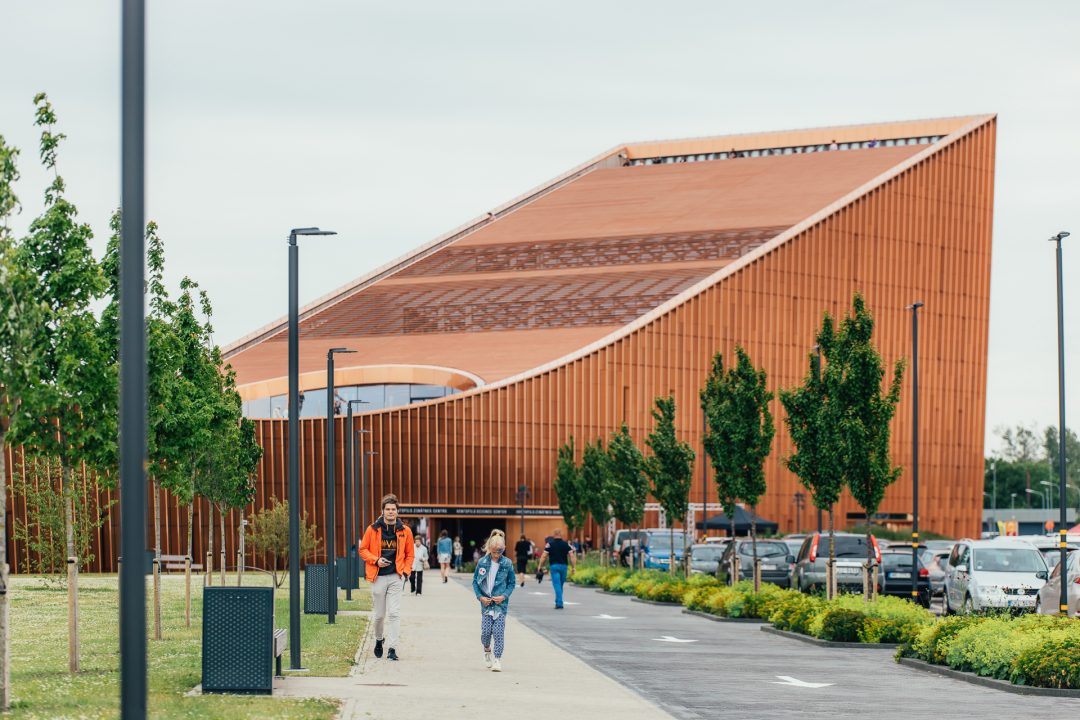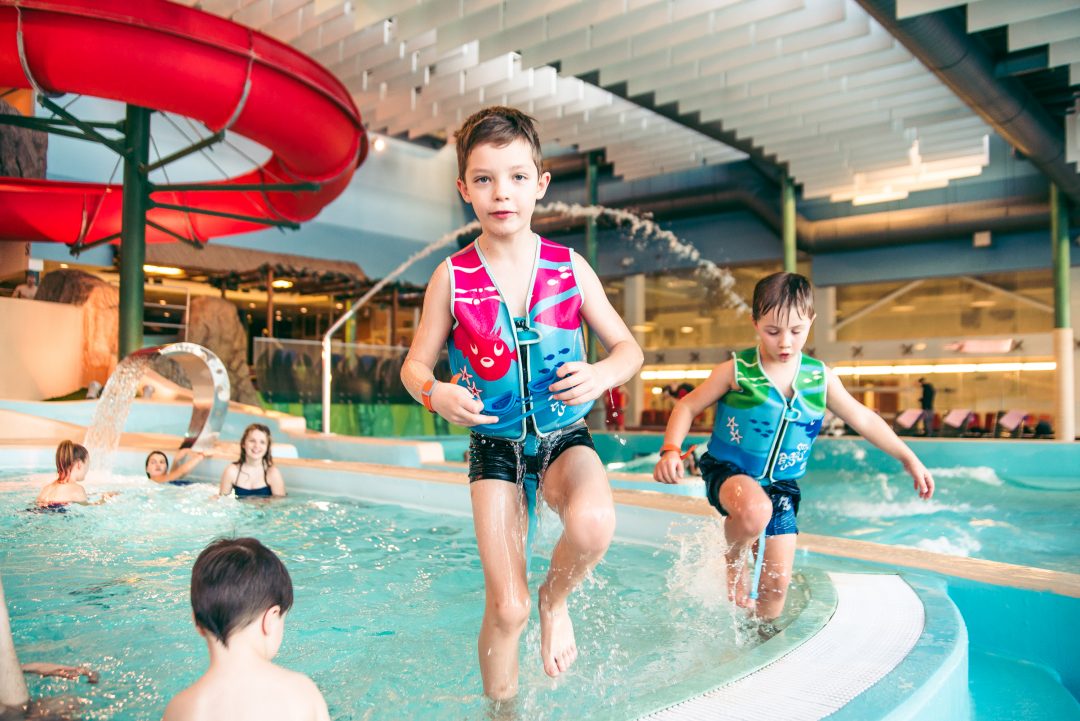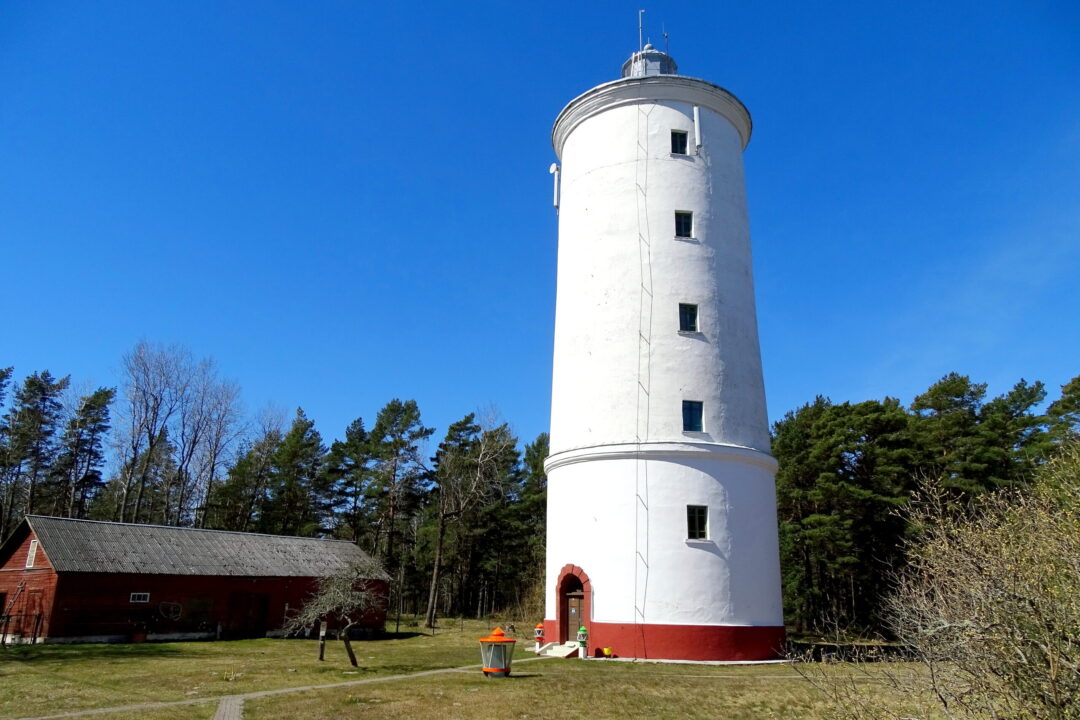In order to promote Latvia’s Livonian roots and Livonian heritage in the Latvian language, cultural space and landscape, the Livonian Institute of Latvia in collaboration with the Latvian National Commission for UNESCO and the Latvian National Centre for Culture declares 2023 as the Year of Livonian Heritage. The Ventspils Museum is also involved in raising the awareness of the Livonian heritage and offers “excursions” to the fishing villages of the Livonian coast.
Oviši –Pațikmō
The Ventspils Seaside Open Air Museum still has the railway train Mazbānītis, which was an important means of transport for the people of the Livonian fishing villages in the past. The first stop where we will “disembark” will be Oviši, which marks the beginning of the Livonian coast as seen from Ventspils towards Kolka
Twice every day the little train, which is nicknamed the tea machine
stops here, once coming from Ventspils, the other time going to Ventspils,” wrote Vilis Veldre about the little train in Oviši in 1937.
A place where the light burns
The Livonian name for the village of Oviši is Pațikmō.. Tā nozīmi, iespējams, ļauj izprast igauņu apvidus vārds pattik The Estonian word pattik (thicket, brush) may help to understand its meaning. In the 20th century, one of the oldest houses in the village, Kalnu Oviši- was inhabited by people with the surname Patikne. It is assumed that this surname reflects a slightly Latvianized version of the village’s Livonian name.
Another old name of the Oviši is found in written sources – Liserort (Lyserort, Lusort). It comes from the Swedish lysa meaning to burn, to shine, and ort meaning place, horn. The Scandinavians gave this name and it was used in documents written in German and Russian.
Opposite Oviši in the sea is a dangerous area of shoals, only about 10 metres deep, where many ships have perished over the centuries. In ancient times, bonfires and tar barrels were lit on the shore to mark the shoreline in the dark and to warn of dangerous places.
Oviši Lighthouse
In the 19th century, a lighthouse was built in Oviši to warn sailors of shoals. Construction of the lighthouse began in 1809, but was interrupted by the War of 1812 with Napoleon’s troops. It is known that between 1814 and 1844, the lighthouse burned sporadically. In 1844, the lighthouse was completed and took the shape that we still see today. 1844. gadā pabeigta bākas celtniecība un tā ieguvusi veidolu, ko redzam vēl šobaltdien.
Today, the Oviši lighthouse is the oldest lighthouse in Latvia that is still in operation. It is included in the State List of Protected Cultural Monuments. The lighthouse complex houses an exhibition on the history of Latvian lighthouses.
The lighthouse is built on wooden piles, made of red bricks and boulders. The lighthouse has a double-cylinder construction: its diameter is 11.5 metres, and inside the stonework there is a second tower with a diameter of 3.5 metres. Double-cylinder lighthouses of this type were also used in Europe in the 18th-19th centuries as defensive structures in case of enemy attack. The tower of the lighthouse with lantern reaches a height of 37 m.
The lighthouse workers’ building, built in 1904, has also been preserved. When the small train started running on the Ventspils-Mazirbe-Dundaga route during the First World War, some rooms in this building were allocated to the Oviši station.
The Oviši lighthouse is managed by the Freeport of Ventspils Authority and is open to the public. More information here : https://www.visitventspils.com/activity/ovisu-baka/
Fire ship Laima
1928. gada 28. oktobrī, lai uzlabotu kuģošanas drošību, Ovišu sēkļos novietoja ugunskuģi (peldošo bāku) Laima. Kuģis bija būvēts 1889. gadā Hamburgā un agrāk bija darbojies kā ugunskuģis Elbas grīvā. On 28 October 1928, the fire ship (floating lighthouse) Laima was placed on the shoals of Oviši to improve the safety of navigation. The ship had been built in Hamburg in 1889 and had previously operated as a fire ship in the Elbe estuary. During the First World War it was used to mark minefields near Ventspils, but was washed ashore during a storm. In 1928 it was repaired, redecorated, consecrated and moored at Oviši. It was also the first stationary marine scientific observation station in Latvia.
The lighthouse of the fire ship emitted a light signal, and there was also a fog siren to warn ships. If it was damaged, a bell was used. If ice threatened the Laima in winter, buoys were put in its place.
Six of the nine crew members were permanently on board, as three took turns ashore. It was necessary to find an opportunity to spend two weeks ashore after spending several weeks on the ship.
In the late 1930s, the idea of building a permanent lighthouse on the Oviši Bank was conceived. However, it was only in 1984 that the Irbe lighthouse was built. Until then, after the Second World War, the safety of navigation on the Oviši Bank was protected by the fire ships Arkhangelskiy and Irbenskiy.
Out of 51 houses, 10 remained
Before the Second World War, Oviši was one of the largest fishing villages on the coast of Northern Kurzeme. The village had 51 homesteads besides a forestry, a railway station and a lighthouse. The main occupation of the inhabitants was fishing. The fish was transported to Ventspils by the small train in salted and dried form. The transport of gravel and pebbles from the seaside to Riga was a good additional source of income for the inhabitants of Ventspils.
“…pebble gravel is a good thing, and the inhabitants of Oviši know how to make a good living from it. You see a young man driving a one-horse cart straight along the water’s edge, stopping, putting a wire mesh cross on the cart stacks and throwing the small pebbles through the mesh into the cart with a shovel. A few more of the same sifted pebble carriers can be seen further on.” This was observed in 1937 on the Oviši seashore by V. Veldre. He asked the people of Oviši where the sifted stone rubble was being taken to and was told: “They go to Riga – for asphalt and for paving green paths.”
It is mentioned that in 1990 there were only 10 houses in Oviši – Prinči, Apses, Jūrmalas, Mārupes, Sāmīši, Siseņi, Lejas Oviši, Kalna Oviši, Mierklani and Meždārzi, but today there are 13 inhabited houses. The bustling village life was interrupted during the Soviet occupation, when Soviet military bases were built in the former Ventspils district, and a closed zone was established along the entire Livonian coast, which could only be entered with permits. . Border checkpoints and control posts on the roads were set up for this purpose. The economic activity and freedom of movement of the population on the Livonian coast was restricted and many moved elsewhere.
Notable personalities
The Prinči family, which is important in the cultural history of Livonians, is linked to Oviši, and one branch of the Prinči family was established in this village. The son of the best-known member of the Prinči family – the Livonian cultural worker, poet and translator Jānis Princis (1796-1868) – Indriķis Princis was born in 1823 in Viļumi of Miķeļtornis. Later, however, he worked as a forester in Oviši. Indriķis was married twice – to Trīne and Babe. In total he had seven sons and five daughters. There is a long row of Prinči graves in the Oviši cemetery, and Indriķis’ grave, on which his name is still legible, is clearly visible.
A special personality is Indriķis’ grandson Kārlis Aleksandrs Princis, who became a biologist, entomologist, assistant professor at the University of Latvia, director of the Riga Museum of Natural History, and later, in emigration, a renowned scientist in Sweden and abroad.
K.Princis was among the brave Latvians who signed the politically significant Memorandum of the Central Council of Latvia in 1944. In the autumn of the same year, he and others left Ventspils on a fishing boat for exile in Sweden. There he began working in the Department of Entomology at the Institute of Zoology of the Lund University, and compiled a 1224-page catalogue of the world’s cockroaches (Blattodea). Newly discovered genera and species of cockroaches are named after K.Princis, thus the names include Princisia, Pirncisola, Princisaria.
In addition to his entomological research, Princis also delved into his family history. A copy of the manuscript by K. Princis, which describes the Princis family, creates a family tree and provides other valuable information, is available in the Ventspils Museum.
Prince died on 25 March 1978 in Västerås, Sweden.
For the time being: “Nēmiz pǟl! (in Livonian – see you!)” until the next “excursion”, when we will visit Lūžņas!
Literature used: Baiba Šuvcāne Lībiešu krasts, Valda Marija Šuvcāne Lībiešu ciems, kura vairs nav, Vilis Veldre Dzīve pie jūras, Ingrīda Štrumfa Ventspils grāmata II.






